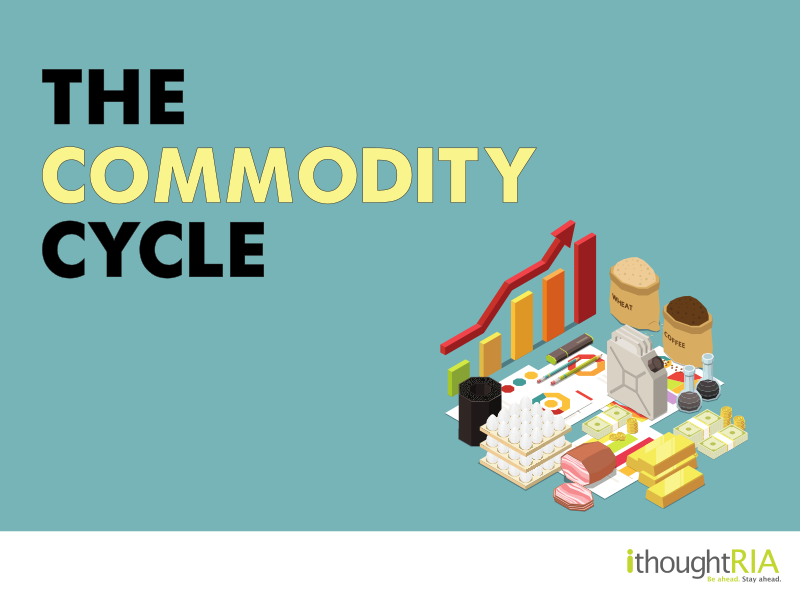
Cyclical Assets
Commodities are cyclical assets. Their performance is very closely linked to the health of the economy. They tend to do very well in economic expansions but tend to underperform during slowdowns and recessions. One should be very cautious about their position in these assets. Generally, the down cycle is drawn out and the recovery phase can be very painful if the investor is caught in it. During the boom, they can play a very important part in the investor’s asset allocation.
Drivers of the Commodity Cycle
Commodities are categorized into hard and soft commodities. Hard commodities include precious metals and commodities such as steel, cement, and aluminium. Soft commodities include agricultural goods such as rice, pulses, dairy, and livestock. Commodity prices are driven by supply and demand. During an economic boom, demand for commodities increases by the way of higher consumption. Sometimes, commodity supply is curtailed to manipulate the price. A good example of this is OPEC controlling oil prices. Tightening supply when demand is normal drives up prices. Other supply shocks could arise through logistical difficulties caused by natural disasters, plant failures and pandemics.
Super Cycles
There have been four commodity supercycles since the 19th century. They have been underscored by major structural shifts in the world economy. A supercycle is a period where commodity prices are above their long term averages for a long time (decades). The first cycle was during the Unites States’ industrial revolution and lasted until the first world war. The next supercycle started during the second world war and lasted long after, as extensive rebuilding of Europe and Japan took place. The 70s and 80s bought in the third supercycle. Demand led to a surge in energy prices, supply was disrupted as countries started nationalizing extraction. The most recent cycle started in 2000 with China’s rapid industrialization and ended in 2014. This resulted in a consumption and infrastructure boom. This was interrupted by the 2008 financial crisis, but demand was restored with China’s quick stimulus-response.
The 2000s cycle
From 2001 to 2006, copper prices had increased six-fold. Several other metals, including gold, aluminium, iron ore and zinc also took off. The main reason for this was the increasing demand led by the rapid growth in India and China. Industry consensus was that commodity prices will stay at the higher end as there were supply bottlenecks due to underinvestment throughout the 1990s. Extraction costs had also gone up by around 30% due to a shortage in mining equipment. Banks, hedge funds and institutions got in on the action. The increasing activity in this space indicated that the retail segment was participating as well. Mining companies bought on new supply by investing heavily in supply. Exploration costs doubled between 2003 and 2005.
The industry peaked in 2011. Commodity themed IPOs were the flavour of the season. Between 2005 and 2010, floatation activity rose by 50%. There was also rampant M&A as seen in any late stage of a cycle. The sector was up more than 3 times its 1999 lows and was nearly close to its all-time highs in the FTSE world index. Investors were ignoring signs of an overheated Chinese economy.
Key Takeaways
Since the pandemic began, aluminium prices have shot up by 77% and copper by 110%. The pandemic has forced investors to move into hard assets and this combined with the supply and logistical constraints played a big part in the current price rise. The question of another supercycle has crept up. If the supply bottlenecks ease and demand is rampant, then there is a possibility of another supercycle. For now, the ball is in the suppliers’ court.